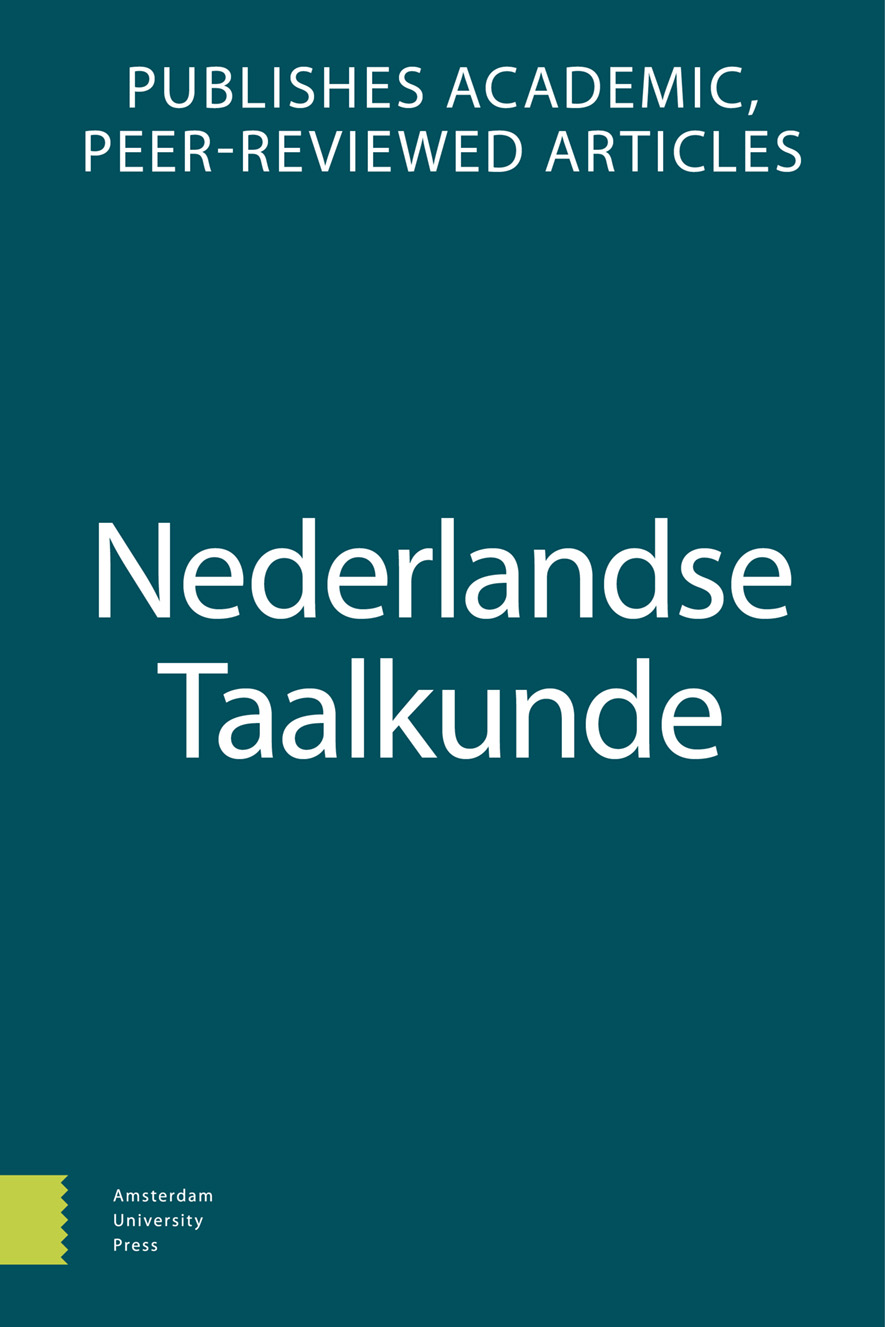- Home
- A-Z Publications
- Nederlandse Taalkunde
- Previous Issues
- Volume 22, Issue 2, 2017
Nederlandse Taalkunde - Volume 22, Issue 2, 2017
Volume 22, Issue 2, 2017
Language:
English
-
-
oa Kwantitatief er en ze
More LessAbstract Quantitative er and ze This paper reconsiders the syntax of indefinite quantitative er and its definite counterpart ze. Quantitative er ‘there’ is obligatory in Dutch when the only visible element in a nominal group is a numeral. I argue that quantitative er is the pronominalization of a lower projection of the nominal group (DP-low) that contains directly modifying adjectives and complements of N but not relative clauses and Read More
-
-
-
oa Multimodale uitdrukkingen van vanzelfsprekendheid
More LessAuthors: Annelies Jehoul & Kurt FeyaertsAbstract Multimodal expressions of obviousness. An empirical corpus study This article presents a multimodal study of the expressions of obviousness in spoken Dutch. Natural conversations between two participants were studied to present an overview of the verbal and non-verbal elements that express obviousness and their interplay. Markers of obviousness are verbal elements like dus, ja, natuurlijk, gewoon and al Read More
-
-
-
oa Key and the use of Moroccan function words in Dutch internet discourse
More LessAbstract In the Dutch used by Moroccan heritage youth one often encounters Moroccan Arabic and Berber function words inserted in otherwise Dutch discourse. This article studies a subset of these function words within the internet forum chaima.nl, a forum geared towards adolescent girls and young women of Moroccan descent in the Netherlands and Flanders. It aims to show that one major function of the insertion of thes Read More
-
-
-
oa De detectie van saillante taalkenmerken
More LessAuthors: Pieternelle Vandekerckhove & Anne-Sophie GhyselenAbstract Detecting salient features: in defence of a multidimensional approach This paper addresses the question how salience, i.e. the perceptual and cognitive prominence of language features (Kerswill & Williams 2002: 63), can be studied and explained. Within language change studies, the concept of salience is often called upon to explain why certain language features are more prone to change than others, but empirical d Read More
-
-
-
oa Een opmerkelijk bijwoord van graad: licht
More LessBy Ina SchermerAbstract The word licht ’light’, meaning not heavy, can be used as an intensifier (adverb of degree). As such it is unique, because it can function both as a a downtoner and an amplifier. In the latter function it combines with (weak) modal expressions, in particular with modal infinitive constructions like te begrijpen ‘to understand’ and with adjectives with the suffix –baar, like ontvlambaar ‘inflammable’. In combination Read More
-
Most Read This Month
Article
content/journals/13845845
Journal
10
5
false
en

Most Cited Most Cited RSS feed
-
-
oa Goed of fout
Authors: Hans Bennis & Frans Hinskens
-
- More Less

